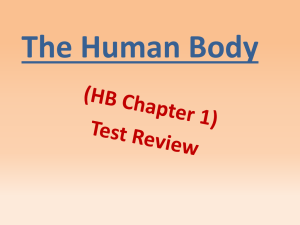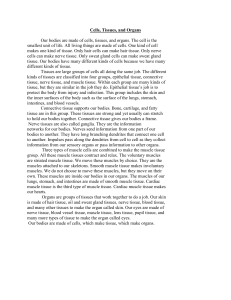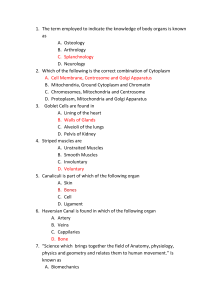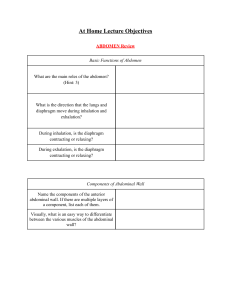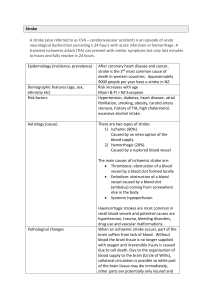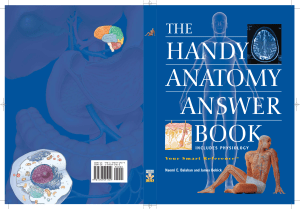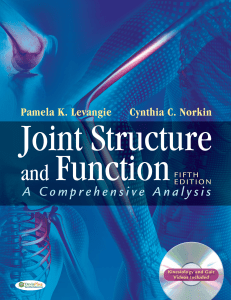anatomical relationships be able to demonstrate and describe
advertisement
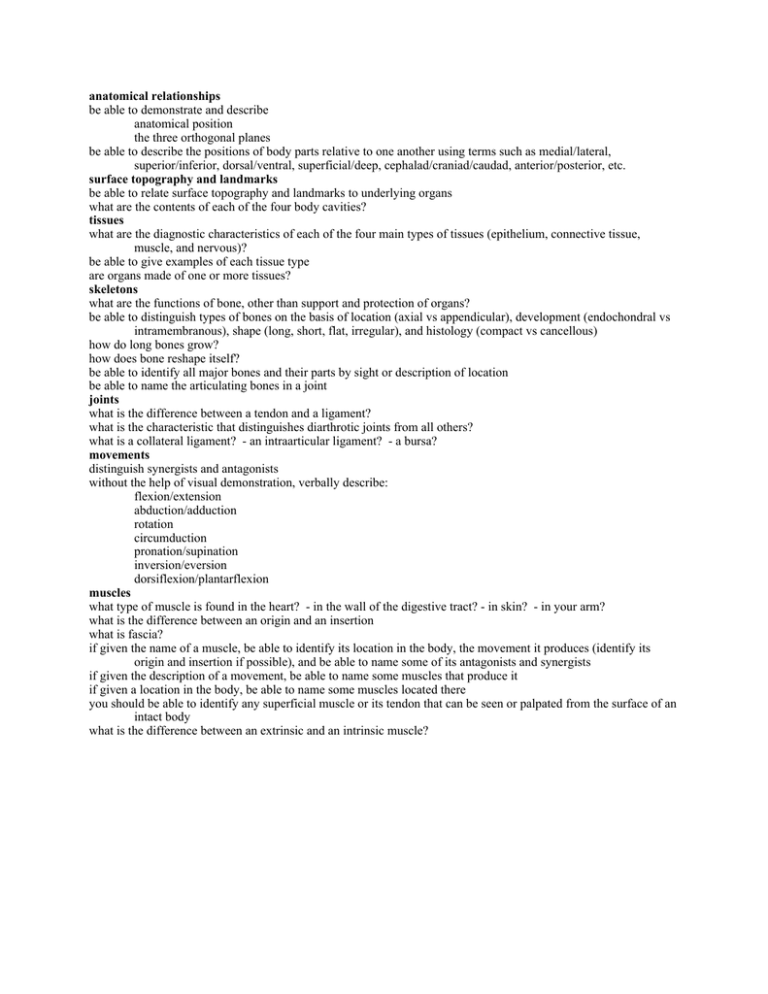
anatomical relationships be able to demonstrate and describe anatomical position the three orthogonal planes be able to describe the positions of body parts relative to one another using terms such as medial/lateral, superior/inferior, dorsal/ventral, superficial/deep, cephalad/craniad/caudad, anterior/posterior, etc. surface topography and landmarks be able to relate surface topography and landmarks to underlying organs what are the contents of each of the four body cavities? tissues what are the diagnostic characteristics of each of the four main types of tissues (epithelium, connective tissue, muscle, and nervous)? be able to give examples of each tissue type are organs made of one or more tissues? skeletons what are the functions of bone, other than support and protection of organs? be able to distinguish types of bones on the basis of location (axial vs appendicular), development (endochondral vs intramembranous), shape (long, short, flat, irregular), and histology (compact vs cancellous) how do long bones grow? how does bone reshape itself? be able to identify all major bones and their parts by sight or description of location be able to name the articulating bones in a joint joints what is the difference between a tendon and a ligament? what is the characteristic that distinguishes diarthrotic joints from all others? what is a collateral ligament? - an intraarticular ligament? - a bursa? movements distinguish synergists and antagonists without the help of visual demonstration, verbally describe: flexion/extension abduction/adduction rotation circumduction pronation/supination inversion/eversion dorsiflexion/plantarflexion muscles what type of muscle is found in the heart? - in the wall of the digestive tract? - in skin? - in your arm? what is the difference between an origin and an insertion what is fascia? if given the name of a muscle, be able to identify its location in the body, the movement it produces (identify its origin and insertion if possible), and be able to name some of its antagonists and synergists if given the description of a movement, be able to name some muscles that produce it if given a location in the body, be able to name some muscles located there you should be able to identify any superficial muscle or its tendon that can be seen or palpated from the surface of an intact body what is the difference between an extrinsic and an intrinsic muscle?
